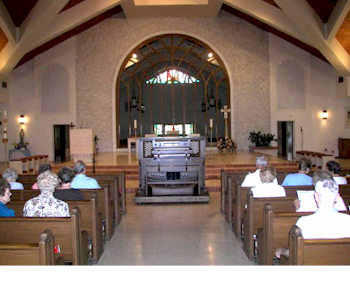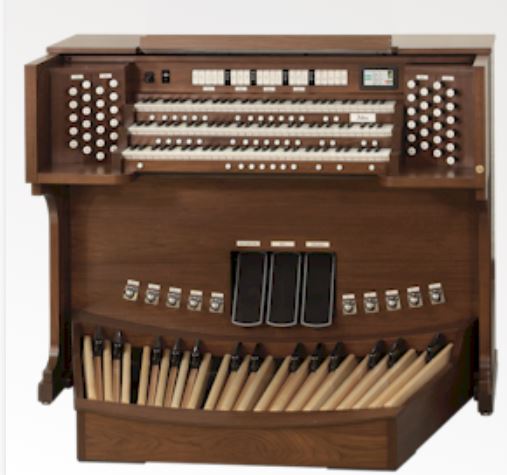
Most church’s and home-organ consumers today chose a digital organ to produce the pipe organ sound they desire. Many options are available and comparing digital organs can be a daunting task. Marketing jargon used by suppliers makes objective comparison even more difficulty. An organ is a large investment. Choosing the finest instrument will lead to years of joy. Conversely, a wrong choice will be an unhappy experience.
Here are a few straight-forward ways to judge digital organs.
I. The Sound
- How Does it Compare to the Real Thing? Every builder uses flowery language to describe their technology. However, there’s one true acid test for a digital organ’s sound quality. Listen to a builder’s instrument that includes pipes and digital sounds and compare them in the same room. If a builder can’t demonstrate this type of instrument, that should be a red flag. If, in the comparison, you can tell which sounds are real pipes and which are digital voices, you are listening to second-rate digital technology.
- How much variety? There are many styles of music. Don’t settle for an organ that only has one set of sounds. A digital organ should have multiple stop lists and a wealth of additional sounds to augment each. Finally, they should include the sounds needed for today’s contemporary music. Don’t fall for the “less is more” sales pitch. You can have it all!
- How’s the “Sound of Silence”? With organ music, the space between the notes is as important as the actual sounds. State-of the-art digital organs use a process called convolution (sampled acoustics) that goes beyond outdated digital reverb to produce the convincing acoustical ambiance of a cathedral or any environment of your choice. Even if the room has carpet and padded pews, the organ should sound like it’s playing in wonderful acoustics.
II. The Organ’s Construction
- What does the organ look like on the inside? That’s where you will see a builder’s true commitment to quality. Do they skimp where they think no one will look? Are all of the interior wood surfaces finished? Is the console built like fine furniture or knockdown stuff from a discount store? Are all of the important electronics protected by metal enclosures? Are any heat-producing or high-voltage components bolted directly to wood?
- What keeps “visitors” from getting in? Long after the last parishioner leaves on Sunday morning, the organ remains warm. It’s a nice haven for little critters, especially in the winter. And while they’re in there they can do nasty things. The way into an organ is through the expression pedal opening. Is there anything around the organ’s expression pedals to keep unwanted pests out? Is it made of metal or cardboard?
- Speaking of the Expression Shoe(s), what’s their construction? – The sturdiness of an expression shoe indicates a builder’s broader philosophy of building and you don’t even have to look inside the console to see them. Are they metal, wood or plastic? Do they feel firm and sturdy or do they just sort of flop around?
III. About the Builder
- How long have they been in business? Standing the test of time isn’t just a phrase. Nothing substitutes for experience.
- Have they developed their own digital technology or do they use someone else’s? Today’s digital organs can be marvels or mysteries. Will your builder be able to troubleshoot and support an instrument whose technology they haven’t even designed?
- Are they a real builder? A company that builds its own sub-assemblies has better quality control and offers longer product support. Some companies that call themselves builders are really assemblers that outsource to cut costs.
- Will they be there when you need them? A warranty is a good start, but how do you know the builder will be there to honor it? Make sure the company has financial stability. If a company has had a long list of owners, it should make you wonder why. Last, but not least, make sure that the builder has local representation that can respond quickly to your service needs. Funerals, weddings and Christmas Eve Services can’t be delayed waiting for parts to arrive from half-way around the world.
Instruments and builders must be superior in all three key areas to meet your artistic and organ investment goals. Do your homework before making a purchase.
